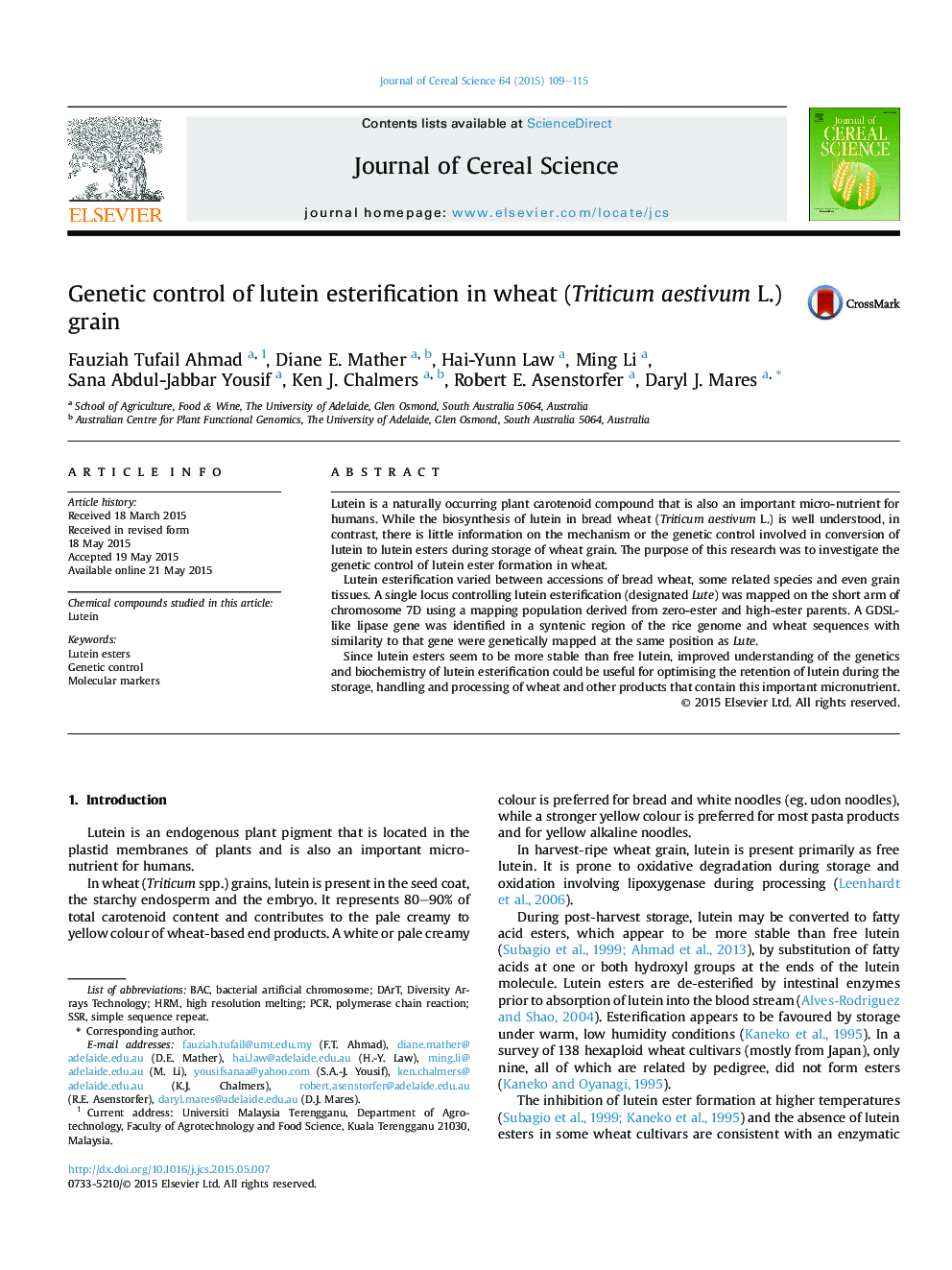| Article ID | Journal | Published Year | Pages | File Type |
|---|---|---|---|---|
| 4515632 | Journal of Cereal Science | 2015 | 7 Pages |
•Lutein esters were detected in the endosperm of bread wheat and some related species.•A locus (Lute) on wheat chromosome 7D confers the ability to esterify endosperm lutein.•A GDSL-like lipase gene sequence is genetically collocated with Lute.
Lutein is a naturally occurring plant carotenoid compound that is also an important micro-nutrient for humans. While the biosynthesis of lutein in bread wheat (Triticum aestivum L.) is well understood, in contrast, there is little information on the mechanism or the genetic control involved in conversion of lutein to lutein esters during storage of wheat grain. The purpose of this research was to investigate the genetic control of lutein ester formation in wheat.Lutein esterification varied between accessions of bread wheat, some related species and even grain tissues. A single locus controlling lutein esterification (designated Lute) was mapped on the short arm of chromosome 7D using a mapping population derived from zero-ester and high-ester parents. A GDSL-like lipase gene was identified in a syntenic region of the rice genome and wheat sequences with similarity to that gene were genetically mapped at the same position as Lute.Since lutein esters seem to be more stable than free lutein, improved understanding of the genetics and biochemistry of lutein esterification could be useful for optimising the retention of lutein during the storage, handling and processing of wheat and other products that contain this important micronutrient.
